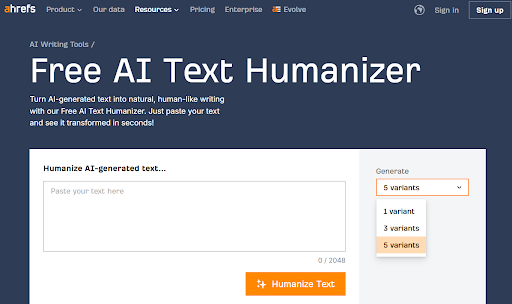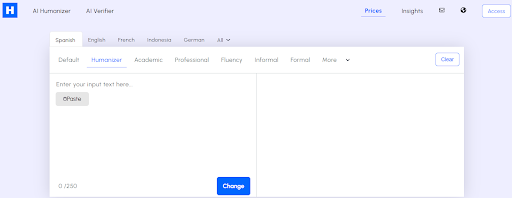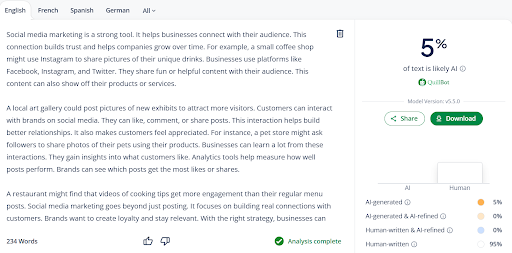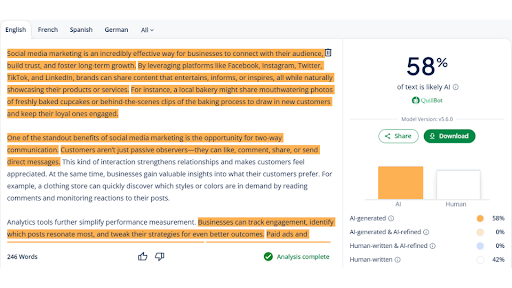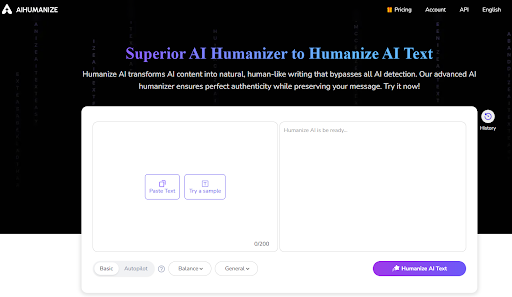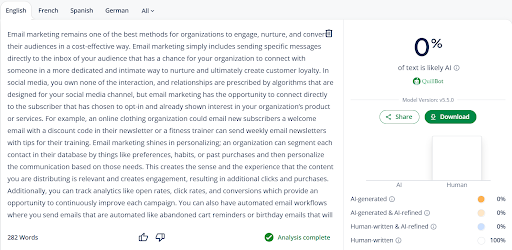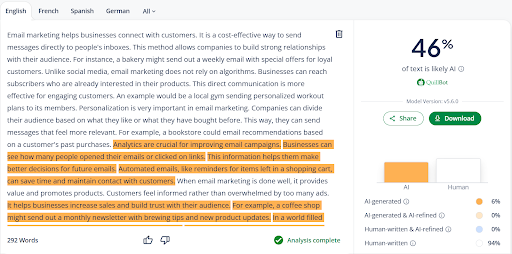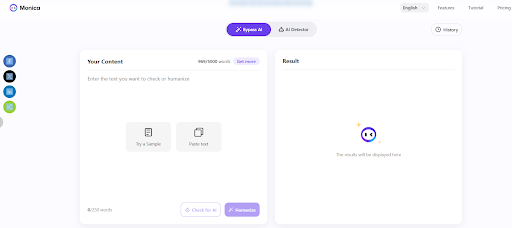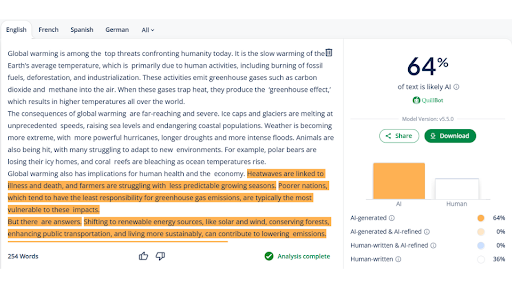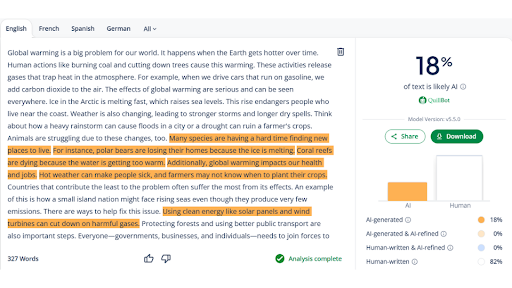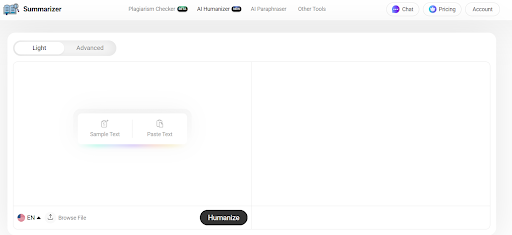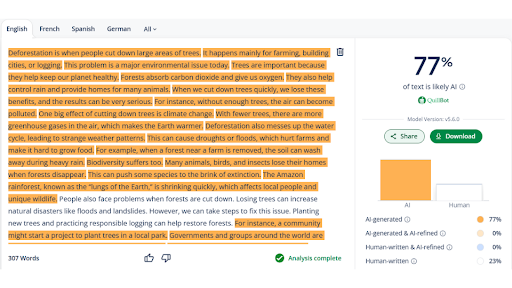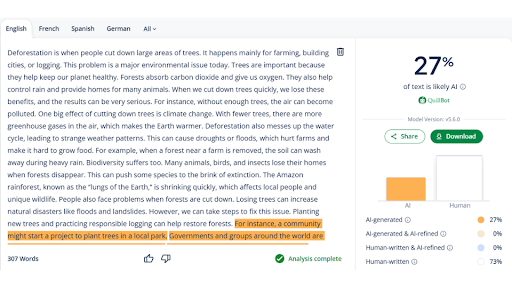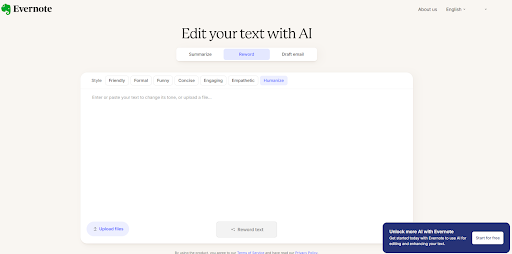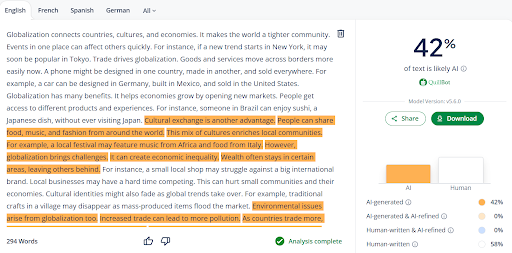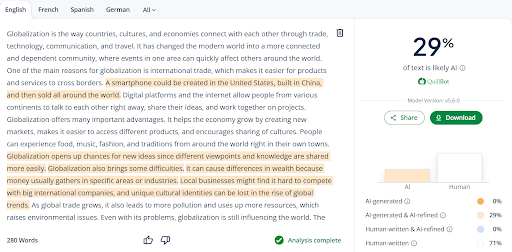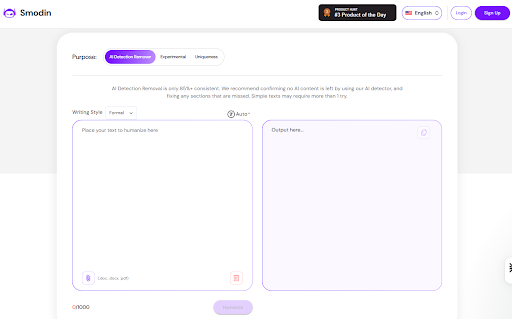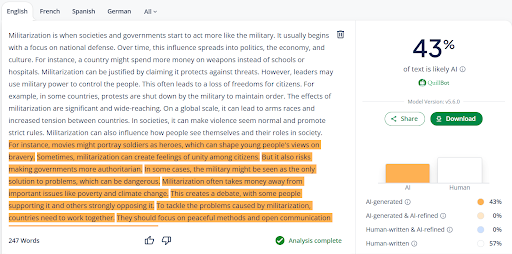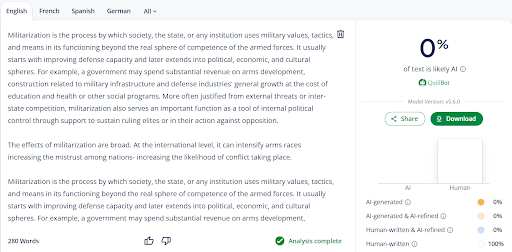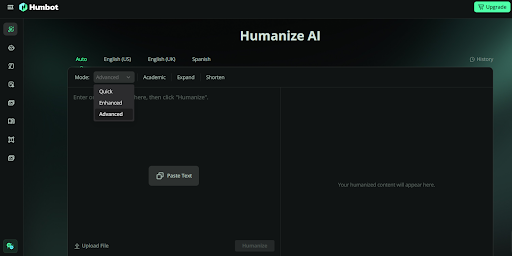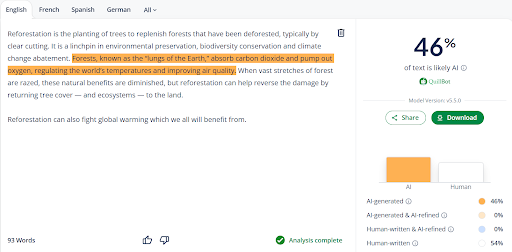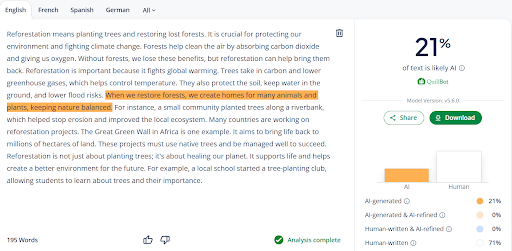Top 7 AI Humanizer Tools Compared: Why Humanizador.net Stands Out
Compare the top 7 AI humanizer tools in 2025. See why Humanizador.net stands out with 90%+ accuracy, natural tone options, and reliable results.
Robots not only write content, but they also make it sound like themselves. So, when we read it, we feel unconnected.
That is a problem for readers, teachers, and clients. Because they want a real human voice, not just polished sentences.
That’s why most writers, students, and marketers try to humanize their content before submission.
However, a recent study by JustDone has revealed a fact about humanizers. Only some of them have accuracy rates as high as 94%. Most humanizers struggle to reach even 25%.
That huge gap shows just how much quality matters.
Humanizador.net is one of the humanizers that has a 90%+ accuracy rate. In this article, I'll compare it with the top 7 AI humanizer tools.
I will test their strengths and weaknesses, and explain why, in 2025, Humanizador.net stands apart as the most reliable choice.
Top 7 AI humanizer tools compared
There’s no shortage of AI humanizers out there. Each promise to “beat AI detectors” or “make your content sound human.”
But the truth is, not all of them deliver. Some tools only change a few words and call it humanized. While others ruin the flow of sentences.
To save you the trial and error, I’ve compared the top 7 AI humanizer tools side by side.
1. AI humanizer by Ahrefs
Ahrefs recently introduced its own AI humanizer. It is best known for its accuracy and for creating up to 5 different variants of a single input.
This feature gives you multiple options at once. So you can pick a version that looks less robotic.
While the variety is helpful, most of the outputs still sound similar and lack depth in tone.
On the other hand, Humanizador.net focuses on quality over quantity. It offers only one polished version at a time.
But it gives you options to select from multiple tones (casual, professional, persuasive, etc.).
This means every time you humanize content, you can adjust the style. And create a different version.
Accuracy tests:
I tested both with an AI detector, and both tools performed well in reducing AI flags.
Humanizador’s tone-based flexibility gave it an edge. It not only passed detection but also sounded closer to authentic human writing.
Ahrefs did well, but not well enough to even pass the detection test.
Verdict:
- Ahrefs wins in speed with multiple outputs.
- Humanizador.net takes the lead in personalization and natural tone.
2. Aihumanize.io
AI Humanize is another popular tool that tries to make AI content undetectable.
It comes with 4 rewriting modes—Quality, Balance, Enhanced, and Private. Where only Balance mode is available for free. Plus, about 6 different formats to rewrite text based on user needs.
This flexibility is useful if you want to test multiple versions of your text at once.
However, tone control is a gap here. AI humanize does not give options to change the voice of the text.
Humanizador.net, on the other hand, may not offer as many formats. But it offers tone-based rewriting.
You can make your content sound professional, casual, or persuasive. Humanizador gives you that freedom.
This makes your text not only undetectable but also engaging for real readers.
Accuracy tests:
When we checked both tools with an AI detector, the results showed that Humanizador’s tone-rich outputs felt more natural.
While AI Humanize sometimes leaned toward repetitive structures.
Verdict:
- AI Humanize gives writing formats.
- Humanizador.net is better for creating reader-friendly, authentic content.
3. Monica’s AI text humanizer
Monica’s AI text humanizer takes a very minimalist approach. Unlike other tools, it doesn’t offer tones, modes, or format options.
It focuses mainly on one thing: humanizing AI content. It has a free AI detector as well, which lets you see how much of your text still looks AI-generated.
Without tone flexibility or rewriting modes, Monica’s output often feels flat and mechanical. It might pass an AI detector, but it will be difficult to engage real readers.
In contrast, Humanizador.net not only rewrites content but also lets you choose tones—academic, fluent, formal, and more.
That means your text won’t just look human to detectors, but to audiences as well.
Accuracy tests:
When I tested both with an AI detector, Monica did reduce AI similarity, but not fully.
Humanizador delivered more natural, audience-ready text.
Verdict:
- Monica helps you check AI similarity along with humanization.
- Humanizador gives you a balance of detector-proof and reader-proof content.
4. AI humanizer by summarizer.org
The AI Humanizer by Summarizer.org comes with just two modes: Light and Advanced.
The Light option gives faster, simpler rewrites, while Advanced attempts a deeper transformation of your text.
With only two modes and no tone customization, the output often feels generic. It works fine for a quick rewrite. However, if you want your content to feel personalized and natural, it falls short.
One unique edge is that you can upload files directly. Handling long-form content becomes convenient.
Humanizador.net may not allow direct file uploads, but it makes up for it with multiple tone options.
You can set your content for different platforms and the audience you are targeting.
Accuracy tests:
In AI detector tests, Summarizer.org’s tool did reduce AI traces. But the results were less fluid compared to Humanizador.
Humanizador consistently produced text that looked authentic to detectors. And felt reader-friendly at the same time.
Verdict:
- Summarizer.org is useful for large inputs. As in files.
- Humanizador wins when it comes to producing undetectable text.
5. Evernote text editor
The Evernote Text Editor isn’t just for note-taking anymore. It now comes with a text humanizer feature.
What’s interesting is that it offers just as many tones as Humanizador.net. So you can shift your text into a professional, casual, persuasive, or creative voice depending on your need.
On top of that, Evernote also allows you to upload files. Means it can handle longer content more efficiently than Humanizador.
So, it is a solid choice if you’re editing large documents.
However, its output still feels a bit robotic. Especially when compared to Humanizador.
Accuracy tests:
In my tests, Evernote has done a decent job.
Still, Humanizador scored better (29%). Evernote works well if you want convenience plus tone control. But if your main priority is human-like text, Humanizador still has the edge.
Verdict:
- Evernote offers both tones and file uploads, making it versatile.
- Humanizador wins in detector safety and natural flow.
6. AI humanizer by Smodin
Smodin’s AI Humanizer keeps things simple with only two tone options—formal and general.
Limited options make it look more sleek, but it does not give you the flexibility that Humanizador offers.
A handy feature is that Smodin allows you to upload files. So you save time on copy-pasting. However, there’s a catch—it only supports files up to 1000 characters.
For longer projects or bulk content, this limitation is restrictive.
Humanizador may allow only 250 at a time, but you can use it for unlimited time without signing up.
Accuracy tests:
In our tests, Smodin reduced AI traces, but the lack of tone variety made the rewrites feel less natural and a bit repetitive.
By contrast, Humanizador’s wide range of tones adds more depth. This makes each rewrite feel unique. Harder for detectors to flag.
Verdict:
- Smodin works for short-form content. Those have basic tone needs.
- Humanizador outperforms it when you need variety and natural flow.
7. Humbot
Humbot is quite new in this market, in comparison to others. It offers just three modes—Quick, Enhanced, and Advanced—to process your text.
These modes mainly differ in how deeply the tool rewrites content. Beyond that, there’s not much customization available.
Unlike Humanizador.net, which provides multiple tones to cater to different real-world applications (blogging, social media marketing, advertisement, etc.).
Humbot’s focus is on speed and levels of rewriting. Rather than stylistic variety.
Accuracy tests:
In practice, Humbot does a decent job at reducing AI similarity. But the rewrites still feel somewhat mechanical since tone control is missing.
It’s fine if you just want a fast way to pass AI detection.
But if your goal is to create natural, human-like writing that truly blends into different platforms, Humanizador takes the lead.
Verdict:
- Humbot is better for quick fixes, like expansion and shortening.
- Humanizador.net offers the control. So you make content feel like written by a real person.
Why Humanizador.net stands out
I have compared all 7 tools. So it’s clear that Humanizador.net offers the best balance. Such as accuracy, customization, and usability.
→ Humanizador has more options than many AI humanizers in the market, and it is also more accurate.
→ I even tested the tools through AI detectors. Humanizador consistently outperformed them. It produced text that scored human-like and also read smoothly.
→ In short, if you’re serious about making AI text authentic, Humanizador.net is the tool that truly delivers.
Conclusion
AI humanizers have become essential for anyone using generative AI in their workflow.
And each of them brings something to the table. But when it comes to balancing tone variety, natural readability, and detector-proof rewriting, Humanizador.net leads the pack.
If you want content that doesn’t just look human to algorithms but also feels authentic to real readers, Humanizador is your best bet.
Give it a try. Test it against any detector. You’ll see why it’s quickly becoming the go-to choice in 2025.
